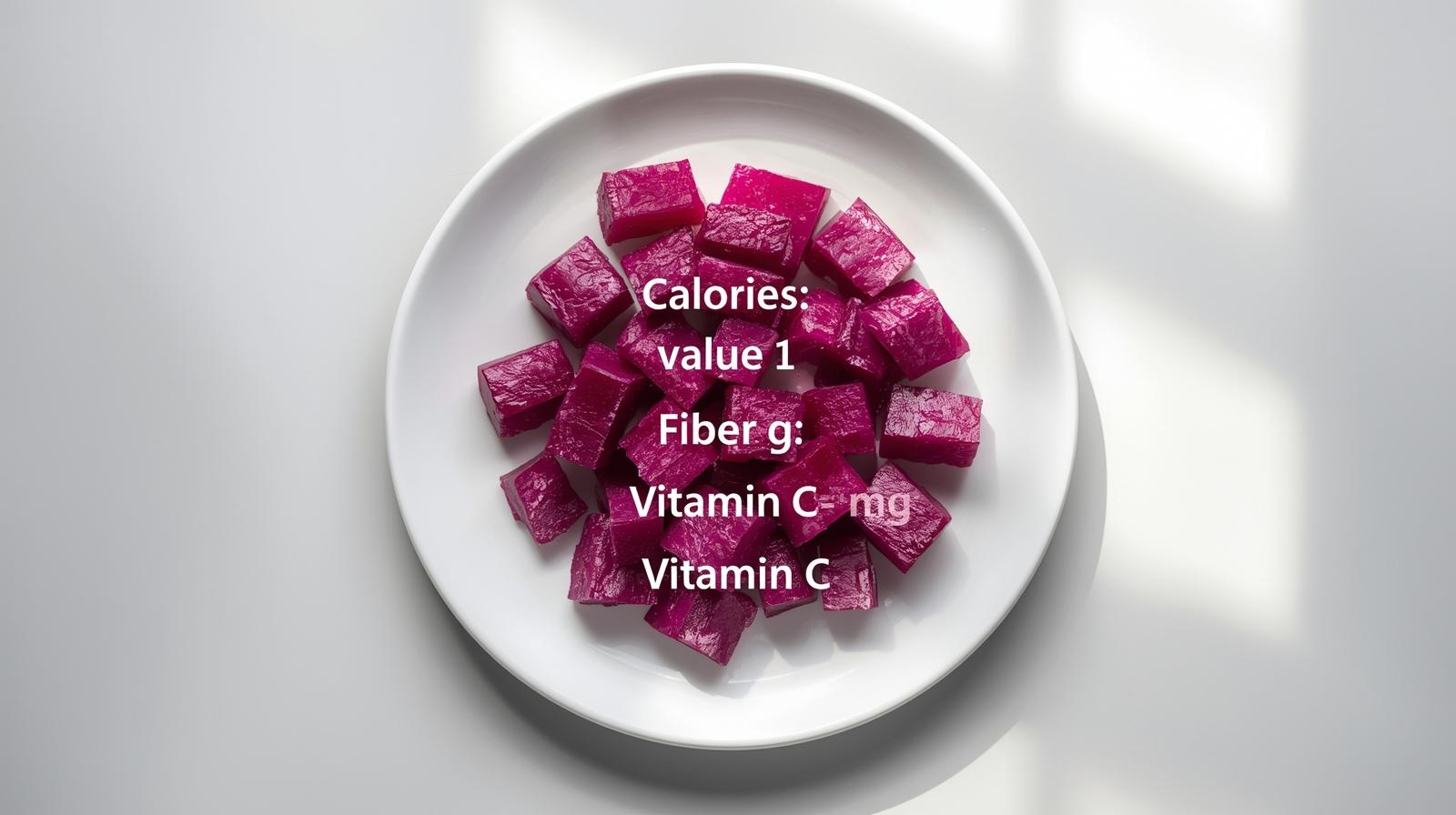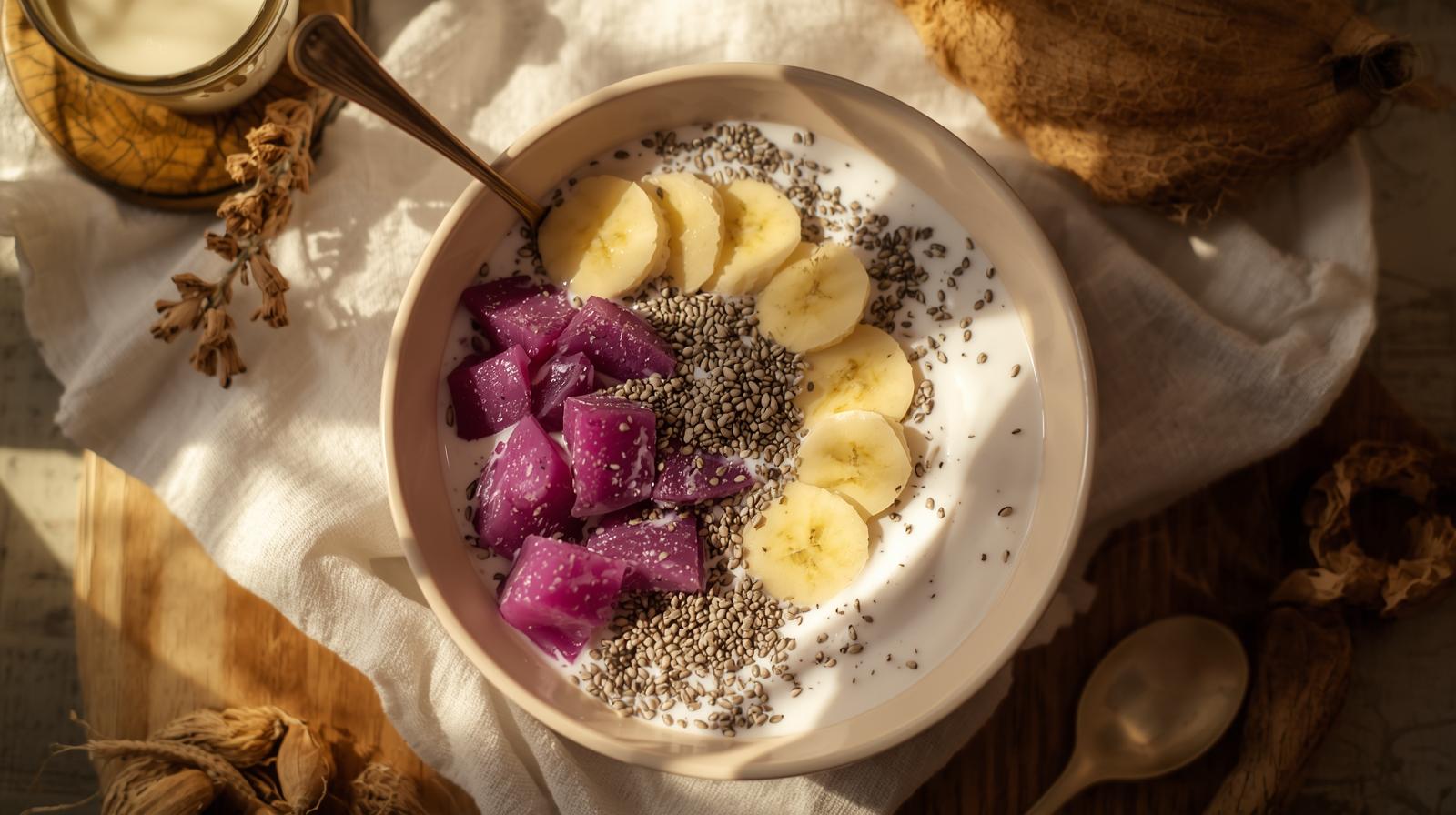
Ube in Pregnancy — The Short Answer
Yes, pregnant women can eat ube (purple yam). Cooked ube is a nourishing starchy root that’s naturally purple thanks to anthocyanins — antioxidant pigments associated with vascular and oxidative-stress benefits. [3] It provides complex carbohydrates, fiber, vitamin C, and potassium, making it a great occasional replacement for refined starches. [1] [2]
The key is to enjoy it cooked and in moderation. Steamed or boiled ube offers steady energy, while desserts like ube halaya or cakes can be high in added sugar and fat — align portions with general pregnancy diet guidance. [4] [5]
What Exactly Is Ube?
Ube (Dioscorea alata) is a purple yam native to Southeast Asia, especially the Philippines. It’s distinct from taro and purple sweet potato, with a subtly nutty-vanilla flavor and a naturally vibrant hue from anthocyanins. [2] [3] Traditionally boiled, mashed, or made into ube halaya (purple yam jam), it now features in ice cream, cakes, and drinks worldwide.


